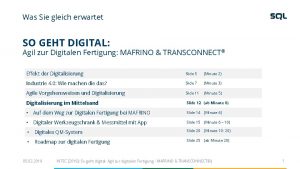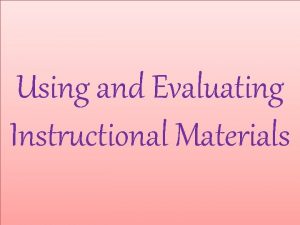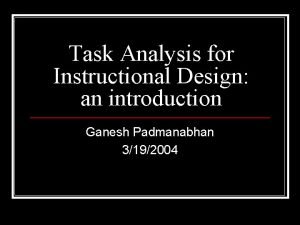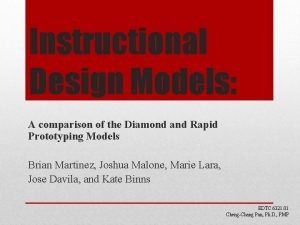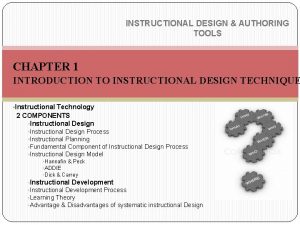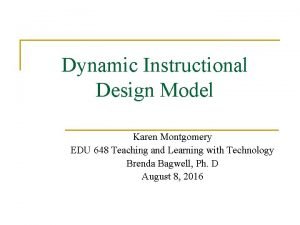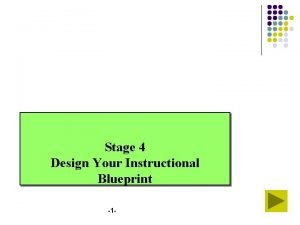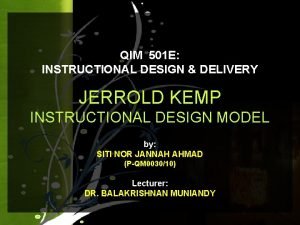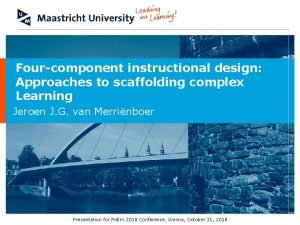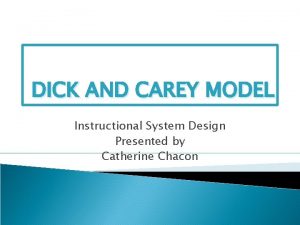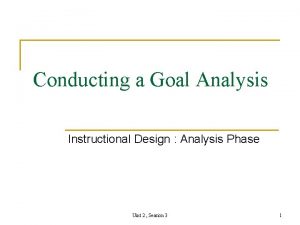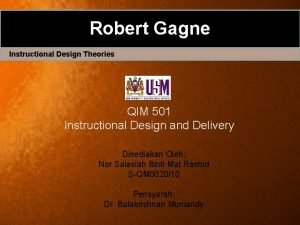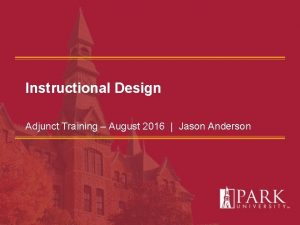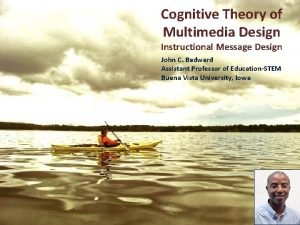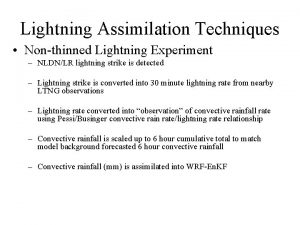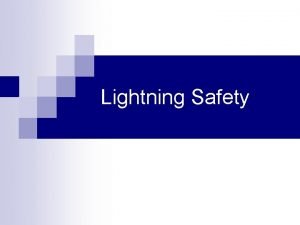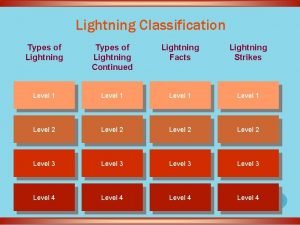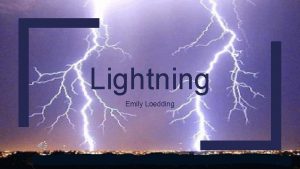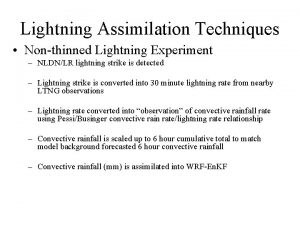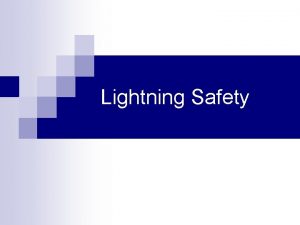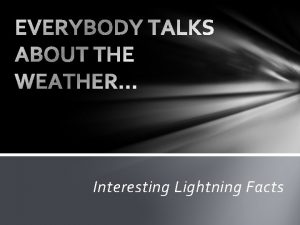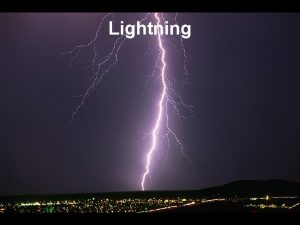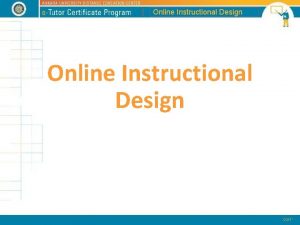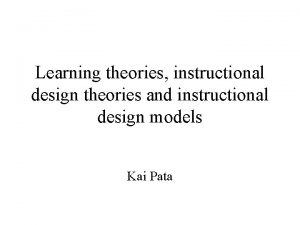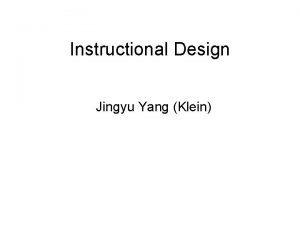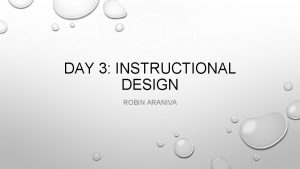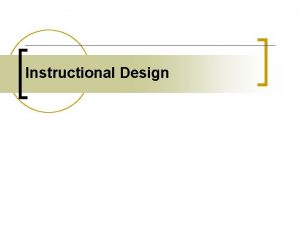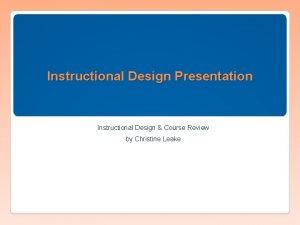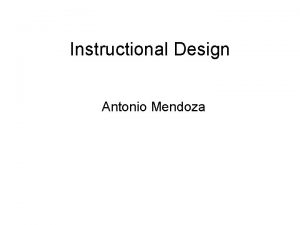Using Lightning Talks in Instructional Design Kelly Schrank




















- Slides: 20

Using Lightning Talks in Instructional Design Kelly Schrank

What I’ll be Covering Lightning Talk • Background • Types of Presenters • Power. Point Slides • Use for Instructional Design • Student Learning Tasks • Audience Engagement • Instructor Advantages • Conclusion •

What’s a Lightning Talk? • 5 minute talk • 20 prepared slides • Strictly timed • Slides are advanced by someone else • 15 seconds per slide

Where have I seen this? Society for Technical Communication Summit • • 2011 • I didn’t attend, but I heard all the buzz 2012 • I presented “How to Bring the Benefits of STC to Work” • Slides are on Slideshare

Highlights Society for Technical Communication Summit • “This session is for fun. It’s meant to entertain you, in the same way a train wreck does. ” • “I use the term “presenter” in the very loose sense. ”

Two Types of Presenters • Experienced • Confident • Smooth • Calm • Well-practiced

Two Types of Presenters • Impulsive • Nervous • Talking too fast • There for a laugh • Talking too slow

Power. Point Slides Pictures are good • Watching a Lightning Talk • Giving a Lightning Talk

Power. Point Slides • • Short and to the point Make point with images and humor

How can we use it in ID? • Put student in front of the class • • • Incorporates tenets of constructivist teaching • • • Student prepares slides Student makes presentation Meaning-making Reflection Social activity Engaged learners • Presenter must learn content on a deeper level • Audience experience content differently from peers Works in physical or virtual classrooms

Student Learning Tasks • Learn to be succinct • • • What are your most important points? How can you break the topic down into 15 -second discussions? How can you break through theory to how to use knowledge practically?

Student Learning Tasks • • Learn to communicate well Focus on task • • • No time for long stories or tangents No time to babble No time to look at chat

Student Learning Tasks • • Though they should practice, they will still be sloppy even if they do (and that’s OK). There will be a level of nervousness due to the lack of control.

Audience Engagement • Hard to read from slides blandly when you are trying to make a point in 15 seconds

Audience Engagement • • • Breaks down some of the presenter-audience barrier Laughing with presenter Lots of fun

Instructor Advantages • • Students must think more deeply on a topic to break out the most important topics Students learn to be succinct • • • No time for long stories or tangents Students must communicate well to get their point across Students must focus on task at hand

Instructor Advantages • Instructor has slides ahead of time and runs the presentation • • Eliminates technical difficulties by students Eliminates students going over time on presentations

Want to take it up a notch? Make it a Ninja Talk • After a group project, assign the group to discuss their project or findings: • • One student prepares slides without consulting the others Another student makes presentation without having seen the slides ahead of time Instructor advances slides Lots of fun!

Want to take it up a notch? Make it a Ninja Talk • After a group project, assign the group to discuss their project or findings: • • One student prepares slides without consulting the others Another student makes presentation without having seen the slides ahead of time Instructor advances slides Lots of fun!

Conclusion New way to have students present on a topic or project • Incorporates constructivist tenets for a more engaged, authentic learning experience • Encourages meaning-making, problem-solving, and social activity •
 Dr beate schrank
Dr beate schrank Messmittel schrank
Messmittel schrank Using and evaluating instructional materials
Using and evaluating instructional materials Task analysis instructional design
Task analysis instructional design The diamond model of curriculum development
The diamond model of curriculum development Instructional design authoring tools
Instructional design authoring tools Dynamic instructional design model
Dynamic instructional design model Assure instructional design model
Assure instructional design model Madeline hunter lesson cycle
Madeline hunter lesson cycle Hızlı prototipleme öğretim tasarımı modeli
Hızlı prototipleme öğretim tasarımı modeli Qim far lab
Qim far lab Scaffolding instructional design
Scaffolding instructional design Dick and carey instructional model
Dick and carey instructional model Goal analysis instructional design
Goal analysis instructional design Assure instructional design model
Assure instructional design model Gagne 9 events of instruction
Gagne 9 events of instruction Instructional design portfolio ideas
Instructional design portfolio ideas Sam instructional design model
Sam instructional design model Flexspace csu
Flexspace csu Kemp's instructional design model
Kemp's instructional design model Instructional message design
Instructional message design

